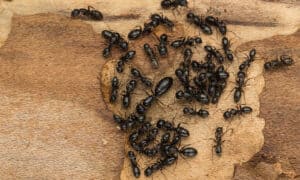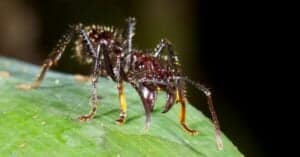In a world full of creatures, some of them can be the most majestic things you’ve ever seen. Others can be one of the most terrifying animals in the world. The most cuddly-looking ones can be the most dangerous ones, as well. There are creatures on this planet that are extremely small, but deadly. When it comes to ants, you may think that because they are small, they are harmless, but that can be further from the truth. Some of them out there are extremely deadly — one tiny little bite and you can be dead in seconds. Let’s take a look at the nine most dangerous ants in the world.
Bulldog Ant
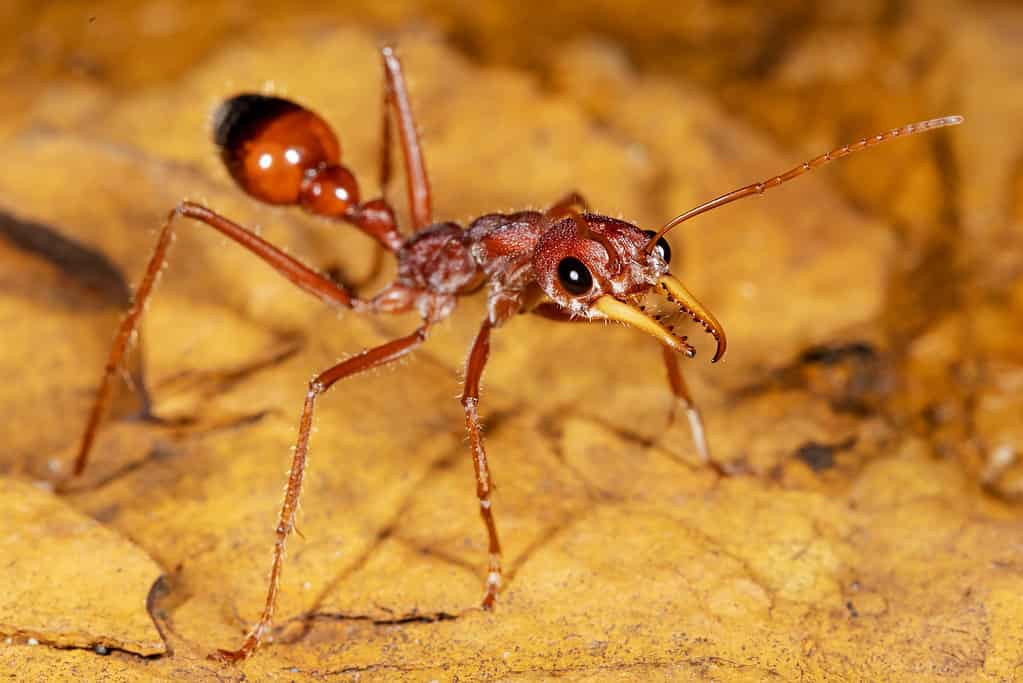
The Guinness Book of World Records has given the bulldog the title of most dangerous ant.
©Ken Griffiths/iStock via Getty Images
Scientists have concluded that the most dangerous ant in the world is the Bulldog ant (Myrmeciinae). Hailing from Australia, this ant is one of 93 species found on the continent. These ants are also quite large, growing up to about 1.5 inches in length. Bulldog ants are black, but have red or orange stomachs or heads. There are quite deadly stingers and with one bite, you can actually be injected with venom and die within 15 minutes. Since 1988, bulldog ants have been the cause of three deaths.
Bullet Ant
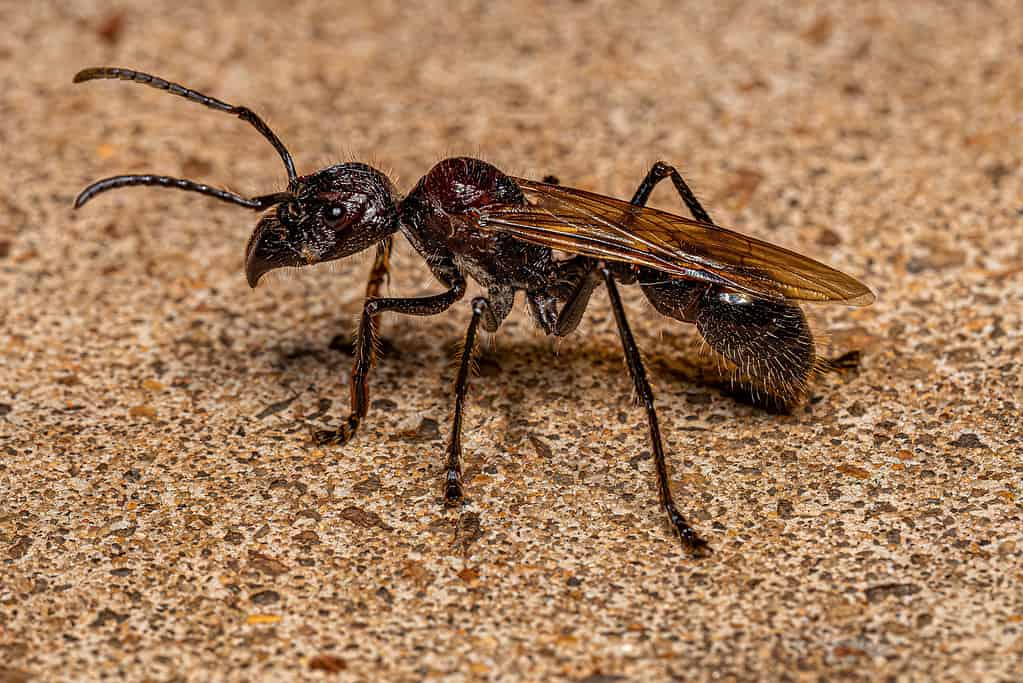
©ViniSouza128/iStock via Getty Images
The bullet ant (Paraponera clavata) is one of the deadliest ants in the world. One sting could send you to the ER with excruciating pain that can last for 24 hours. You will even get symptoms besides pain, which include edema, lymphadenopathy, tachycardia, and even blood in your stool. These tiny creatures are a whopping 1.2 inches long and are a red-black color.
Bullhorn Acacia Ant
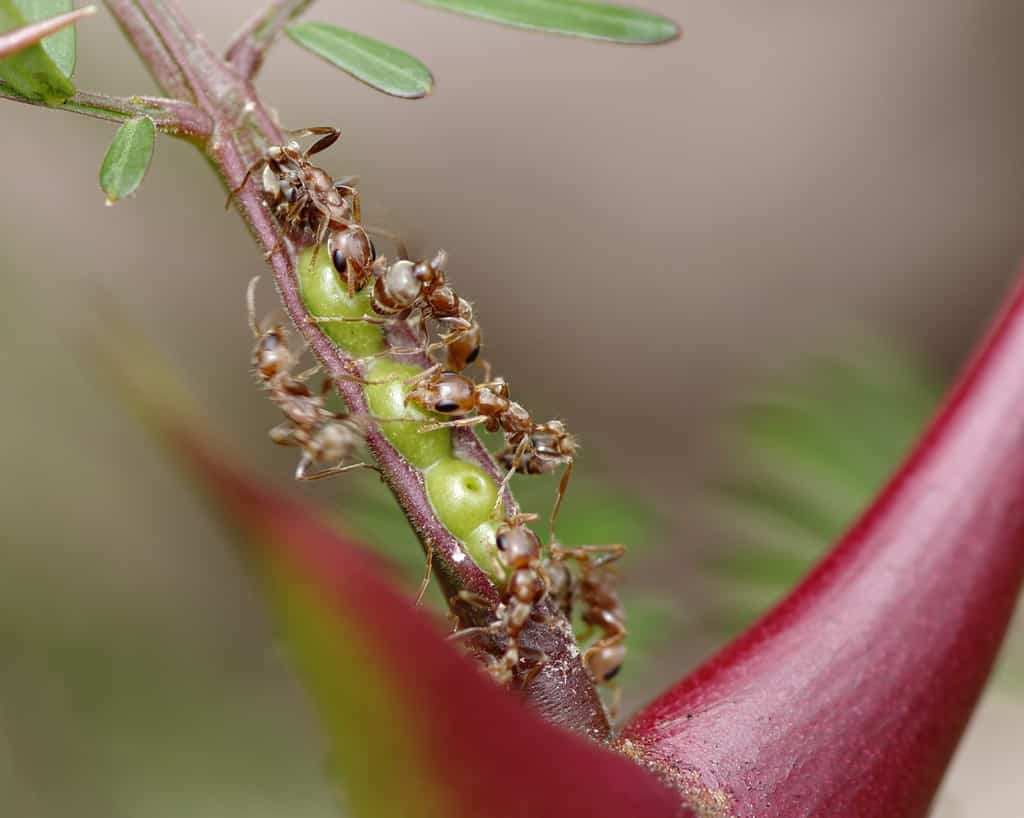
Scientists have discovered that the venom of the bullhorn acacia ant can treat asthma and be an anti-depressant.
©Angel DiBilio/Shutterstock.com
The bullhorn acacia ant (Pseudomyrmex ferruginea) is a tiny creature, but one whose sting packs a punch. The stings can be like wasp stings and sometimes can cause humans or other animals in the way to go into anaphylactic shock. These large-eyed, tan-colored ants hail from Central America.
Fire Ant
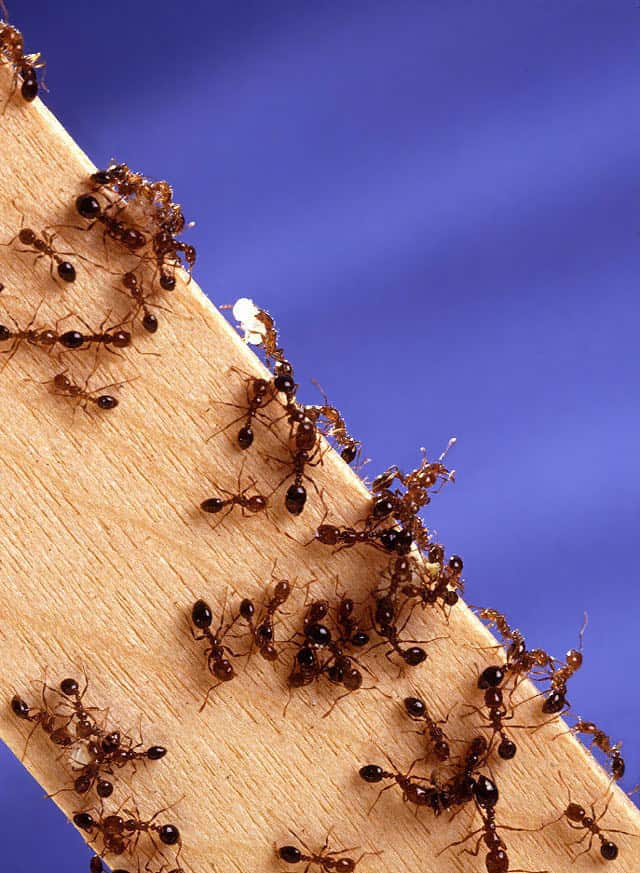
These tiny, deadly creatures are found in many places around the world.
©Scott Bauer / Public domain, from Wikimedia Commons, the free media repository - License
Fire ants (Solenopsis) are part of 200 ant species. They are one of the most painful ants in the world — usually the pain involves hives or even a burning sting type of sensation. The fire ants are usually red, which is why they are also called red ants or ginger ants. Although they can’t kill humans, fire ants can kill small animals with their deadly venom.
Florida Harvester Ant
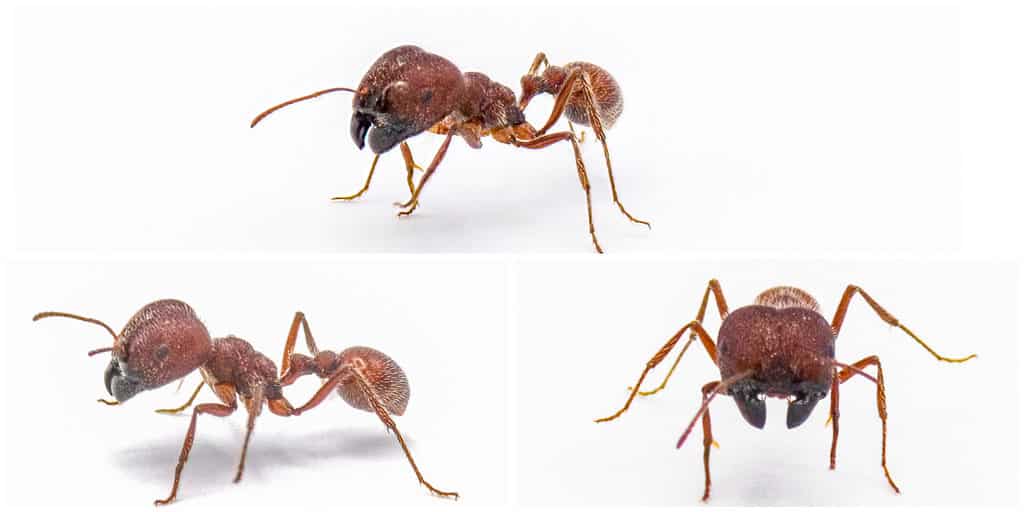
These tiny creatures hail from the Southern United States, but also from the desert areas of Central and South America.
©iStock.com/Dan Rieck
The Florida harvester ants (Pogonomyrmex) are ants that collect seeds, which they eat. They are not deadly in the sense that they will attack you. However, if they are provoked or they sense danger, they will attack and sting the aggressor (including humans). Swelling is the result of the ant’s sting.
Green Tree Ant
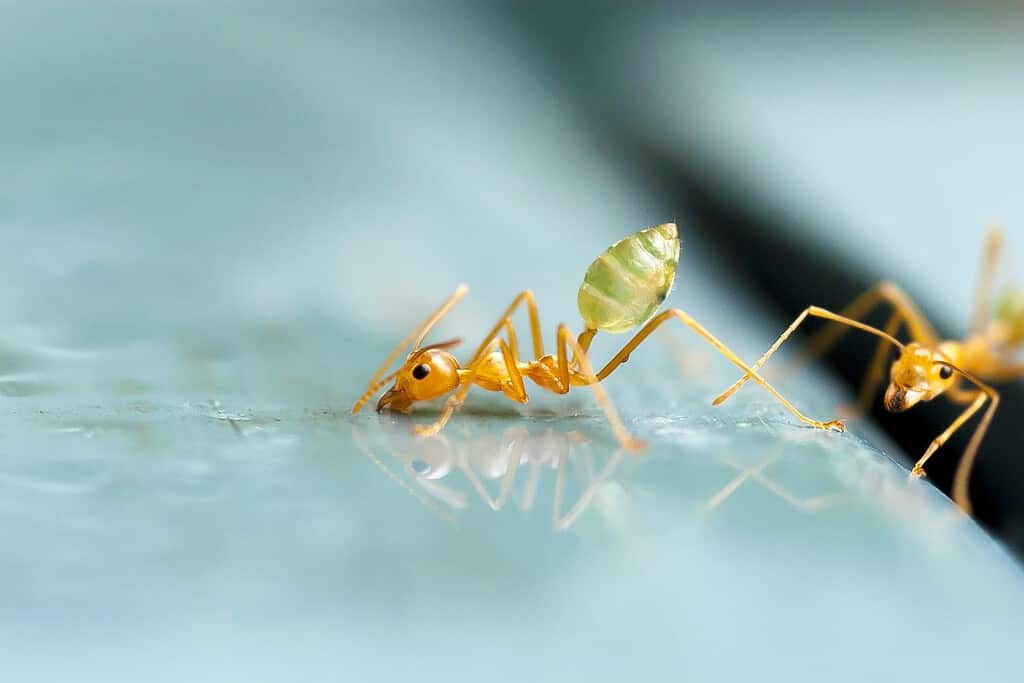
These tiny creatures hail from tropical areas in Asia, as well as Australia.
©Xavier Hoenner/Shutterstock.com
The green tree ants, also called Asian weaver ants, live in trees in the tropical wilderness. They love building nests in these trees they call home. Colonies can have as many as half a million ants. Although they bite and can hurt when they do, these ants have been part of local populations’ diest because of their richness in protein.
Jack Jumper Ant
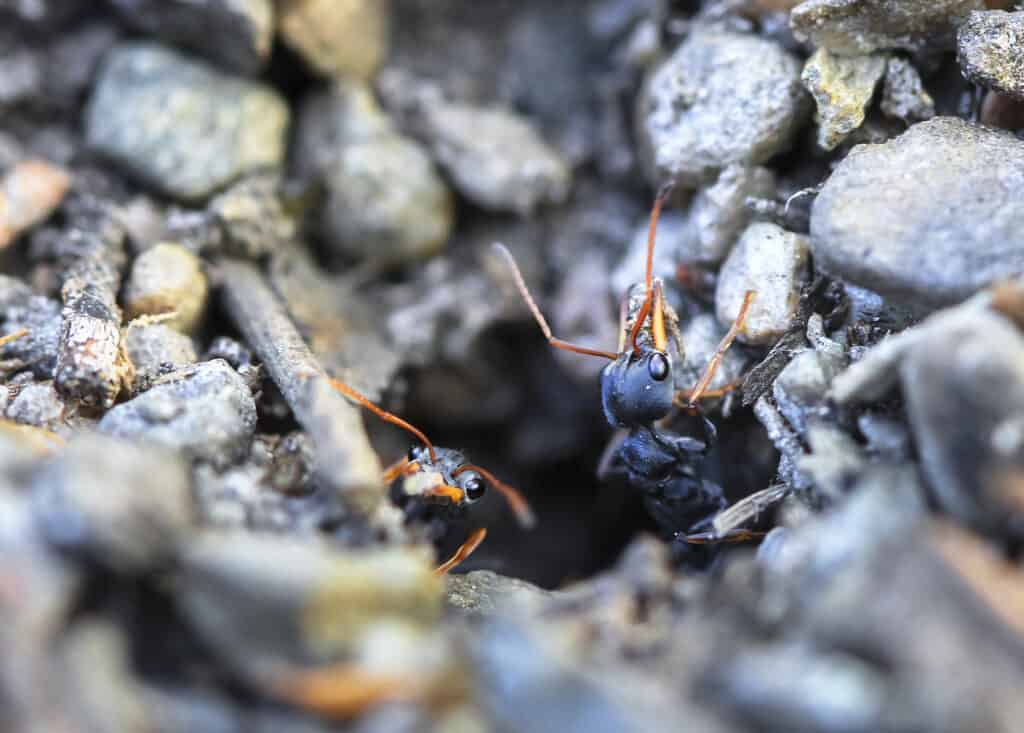
These orange and black ants are one of the most deadly on the planet.
©iStock.com/Kevin Wells
Another ant species that comes from Australia, the jack jumper ant (Myrmecia pilosula) is also found in Tasmania. They can grow up to 0.63 inches in length and they have a venom inside of them that can kill anyone that tries to eat them. Between 1980 and 2000 in Tasmania, jack jumper ants managed to kill four people (yikes!).
Pony Ant

Pony ants are also known as green-head ants.
©Rav Kark/Shutterstock.com
Australia is known to have some of the most terrifying creatures on the planet — spiders, insects, ants, you name it! One of the most deadly creatures living in the country is the pony ant. They aren’t that big but their sting can send you into anaphylactic shock if you’re not careful. They are a green or purple color, which makes them look unique.
Siafu Ant
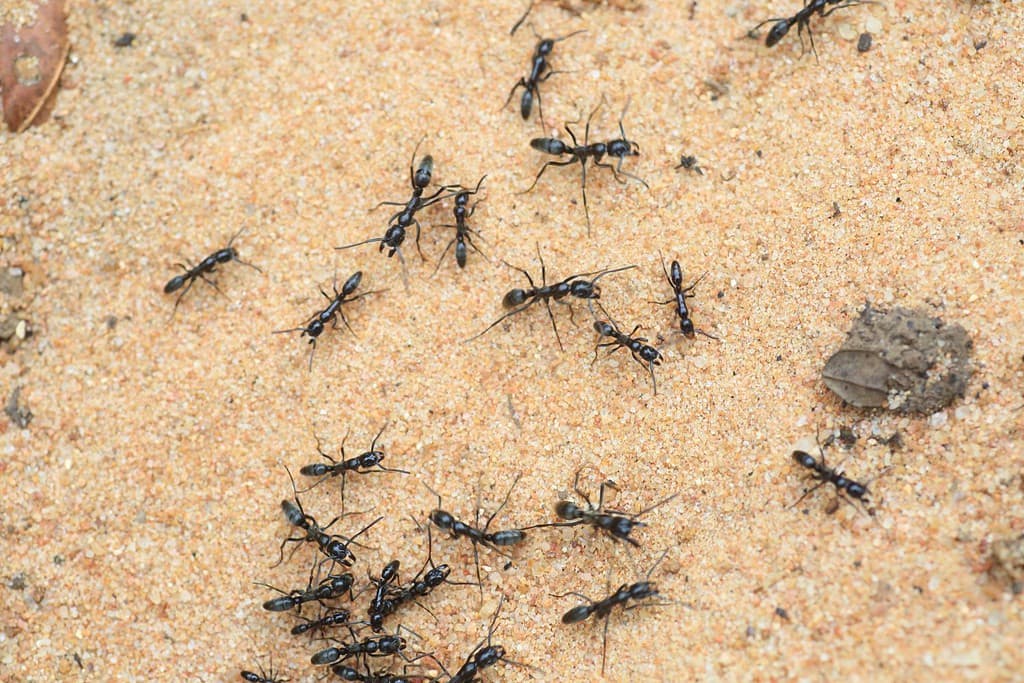
These tiny creatures hail from Africa, most predominately in the Eastern and Central regions of the continent.
©feathercollector/Shutterstock.com
The Siafu ant (Dorylus) is also known as the safari ant or the African driver ant and is part of the genus of army ants. These ants are quite dangerous because they can destroy anything in their way. They won’t attack humans, but if you come into contact with one of them, a sting can hurt extremely badly. They will eat anything on their path to where they will settle, but because they are nomadic ants, they will not build nests.
The photo featured at the top of this post is © AOKSANG STUDIO/Shutterstock.com
Thank you for reading! Have some feedback for us? Contact the AZ Animals editorial team.




